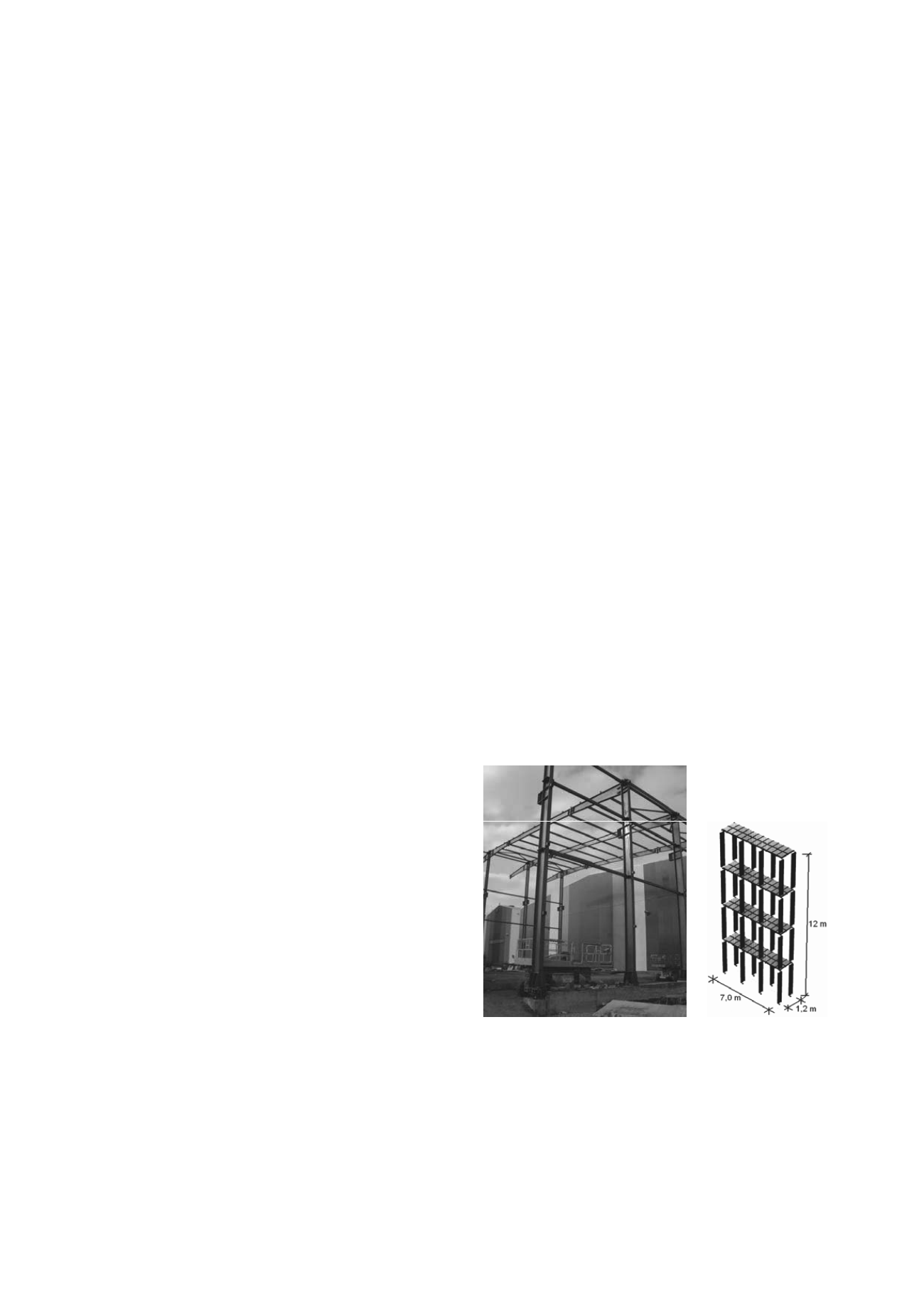
2557
Improvement of the Soil under the Concrete Pavement of a Plant’s Hall
Amélioration du terrain d’assise sous la dalle en béton d’une halle d’usine
Mihova L.
University of Architecture, Civil Engineering and Geodesy, Sofia, Bulgaria,
Kolev Ch.
Todor Kableshkov University of Transport, Sofia, Bulgaria,
aBstract: the geological profile of the ground for the construction of a hall of the “stilmet” plant in sofia includes soft saturated
soils. the improvement is developed of the natural ground by constructing a geosynthetic reinforced pad of crushed stone. to
determine the mechanical parameters of the improved soil ground, in situ tests have been performed and settlement/load relationships
and e modulus values have been obtained. a numerical model is made of the ground by the finite element method. the undrained
short term stability and the consolidation long term stress-strain process of the improved soil ground are investigated.
rÉsUmÉ : le profil géologique du terrain d’assise, prévu pour la construction d’une halle de l’usine “stilmet” à sofia, contient des
sols peu solides, imbibés d’eau. on a effectué une amélioration du terrain d’assise naturel par la mise en place d’une semelle en
pierres concassées, armée de matériaux géosynthétiques. pour définir les paramètres mécaniques de la fondation consolidée, on a
exécuté des essais in situ et l’on a obtenu la relation affaissement-charge, ainsi que le module e. on a établi un modèle numérique
suivant la méthode des éléments finis. la stabilité à court terme (non drainé) et l’évolution des contraintes et déformations
(consolidation) des sols améliorés sont étudiés.
KeYWords: soft saturated soil, geosynthetics, reinforced foundation pad, fem
1 introdUction
the design of reinforced earth structures to replace natural soft
soils is a modern practice in geotechnical engineering of
improving the foundation ground. high bearing capacity and
low ground deformation values are obtained by applying a
foundation pad constructed of layers of hard soil, like
compacted crushed stone, and of geosynthetic reinforcement.
the required thickness of the reinforced pad is much smaller
compared to unreinforced soil replacements. some projects
based on this way of soil improvement are realized in Bulgaria
in the recent years (mihov Y. and mihova l. 2012, Kolev ch.
and mihova l. 2012).
this paper presents some investigations of the improvement
of soft saturated ground under the hall of the “stilmet” plant in
sofia, which specializes in producing aluminum elements. the
geological profile includes uncompacted non-homogeneous
fillings at a depth of up to 4 m and soft clays at a depth of up to
10 m. the design of the ground improvement by the reinforced
pad involves the following steps: (1) choosing the thickness of
the pad and the number of reinforced layers, based on fe
analysis of various configurations of reinforced soil
replacement; (2) construction of an experimental improved
ground area and realization of “in situ” settlement/load tests,
using a circular steel plate with a diameter of 300 mm; (3) fe
modeling using the actual mechanical parameters, and analyzing
the stress-strain behavior and the stability of the improved
ground; (4) realization of the improvement of the hall’s ground,
and verifications of its deformation behavior using plate
settlement/load tests.
2 Geotechnical considerations
the “stilmet” plant hall, whose area is 3000 m
2
, is being
constructed near halls of the same kind (fig. 1). it has a frame
steel structure with spread footings constructed after a 4-meter-
deep strip excavation in three longitudinal axes. the pavement
of the hall is made of fibre concrete with a thickness of 20 cm.
the equipment of the hall is composed of steel shelves, each
being supported at 8 points, and each being 12 m high and
weighing 12 tons. longitudinal beams on the concrete
pavement of the hall transform the point loading into striped.
the seismic loads on the pavement are obtained by performing
a dynamic analysis of the shelf structures
.
(a) (b)
figure 1. steel hall structure (a) and equipment shelf (b).
2.1
Geological profile
the geological profile is shown in figure 2, and the properties of
the different layers are summarized in table 1. the water level is
1.5 m under the surface. the high water level requires analysis
of both the undrained short-term stability and the consolidated
long-term stress-strain behavior of the soil ground. the ground


